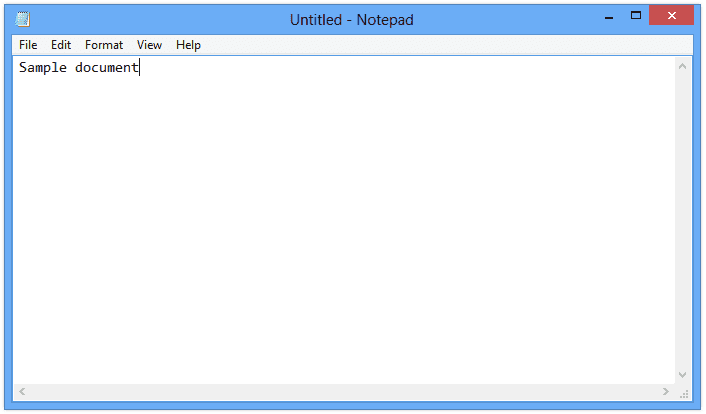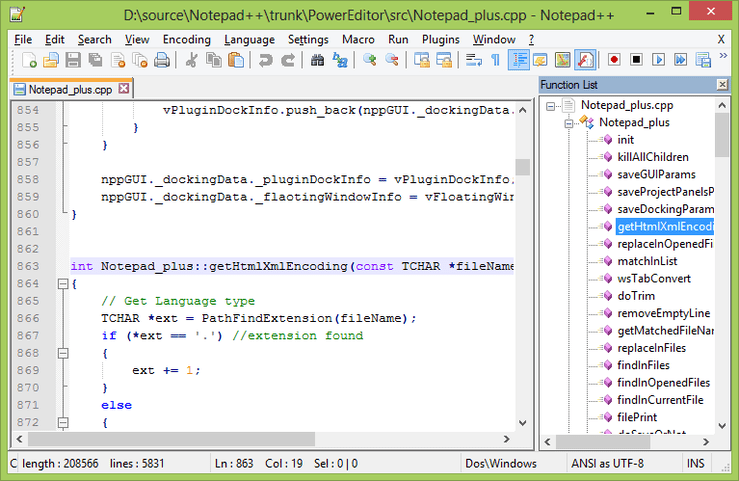
Notepad Or Wordpad For Mac
Our Picks For Top WiFi Antenna Boosters for Laptops Alfa Long-Range Dual-Band AC1200 Wireless USB 3.0 Wi-Fi Adapter w/2x 5dBi External Antennas – 2.4GHz 300Mbps/5GHz 867Mbps – 802.11ac & A, B, G, N The Alfa AWUS036ACH is a long range wireless USB adapter that is compatible with most any operating system, from Windows 10 to Linux. NET-DYN USB Wireless WiFi Adapter,AC1200 Dual Band, 5GHz and 2.4GHZ (867Mbps/300Mbps), Super Strength So You Can Say Bye to Buffering, for PC or Mac, for Desktop or Laptop. Save mac wireless booster to get e-mail alerts and updates on your. 50dBm Long Range WiFi Booster USB Wireless N Antenna 802.11N Windows MAC Beini. Find great deals on eBay for usb wireless booster. Shop with confidence. 50dBm Long Range WiFi Booster USB Wireless N Antenna 802.11N Windows MAC Beini. Mac usb adapter.
In this tutorial, we will show you 2 ways to open JSON files in Windows or Mac computer effortlessly and hopefully you should be able to take a sneak peek on those files. Solution #1: How to open a JSON file with Notepad. Basically, any file reading app will be able to read JSON file like Notepad, Notepad++, WordPad and so on. This is how to make a Text document on a Mac. If you have any questions at all please feel free to email me at.
If you’ve been trained on Microsoft Word since you started using a computer, maybe you’ve never looked at those other writing options in Windows. Notepad and WordPad are both developed by Microsoft itself, and included in every copy of Windows. Don’t dismiss them out of hand—while neither are as powerful as paid software in the same niches, they might just do for you.
Notepad and WordPad, despite their similar names, serve different purposes. Notepad is a text editor, meant for basic plain text entry, while WordPad is a word processor, meant for formatting and printing documents—like Microsoft Word, but not quite as advanced.
They aren’t the only programs in their respective categories, either. Let’s talk a little bit about text editors and word processors, and their intentions.
Text Editors: The Text, and Nothing But the Text
Text editors are just that: editing programs that focus almost exclusively on text itself. These types of applications are designed to keep their users zeroed in on the pure content of what they’re writing, offering little to no means to change the formatting or visual style of the contents. If that doesn’t seem particularly useful to you, then odds are that you don’t have a need for something so simple…and there’s a reason for that, too.
These programs eschew editing tags and visual formatting because they need to keep their formatting and contents as broad as possible, a concept known as “plain text.” The files saved by text editors in the .txt format can be imported, read, and edited by a huge variety of tools, many of which aren’t even intended to be read by users on a regular basis.
For example, Windows programs often save local configuration settings as a simple list in a .txt file. That way, the program itself can retrieve and alter its own settings as needed, but if something goes wrong and the program can’t boot, a user can open the file manually and edit the settings by manipulating the values. Operating logs, an ongoing recording of a program’s activities and results, are often saved as plain text. A lack of formatting makes .txt and similar files tiny in comparison to document files: a 100,000-word novel can be saved as a .txt file that’s only half a megabyte large.
Programmers appreciate simple text editors, because the lack of formatting is conducive to writing in multiple programming languages. Some writers and typists also prefer the simplicity of a text editor for the first stage of large projects, then switch to a word processor for finishing. While the text created by text editors is by definition without complex formatting, some text editors nonetheless include some basic formatting tools (like text wrapping for easy reading, compatibility with cut, copy, and paste shortcuts, or a “Find” function) as creature comforts for users.
Word Processors: All the Formatting That’s Fit to Print
Word processors are intended as tools primarily for writing, not just text entry. The files produced from a word processor are meant to be read, edited, and often printed, complete with often complex formatting and structural options.
Word processors output to specific formats meant to be printed or read by other word processing programs. The formatting tools in word processors include robust options for both print and digital output, with support for inserting hyperlinks, images, tables, and sometimes even more exotic content like videos. Most of them are compatible both with their own proprietary formats—like the .doc extension for Microsoft Word—as well as more general, platform-agnostic formats like .rtf Real Text Format.
Confusingly, word processors can also read and edit file formats meant for plain text editors, like .txt. Users can add as much content as they want to these plain text files, but care must be taken when saving them. Saving in the original format will destroy any formatting added in the more complex word processing program, but saving to a more robust file format will make the file larger and incompatible with the original text editor. Generally speaking, if you’re opening a .txt file or something else without formatting, you should do so in Notepad to avoid the possibility of saving it in an incompatible file. Mac office 365 keeps asking for activation.
Notepad vs. WordPad
Microsoft’s Notepad actually predates Windows—it was first included as a pack-in app for the original Microsoft Mouse way back in 1983, running in MS-DOS. The text editor was bundled with the first release of Windows in 1985, and it’s been inseparable from the platform ever since. While Notepad isn’t the most complex or capable text editor in the world, its universality makes it the most used by default.
A decade later, WordPad was developed my Microsoft as a free program bundled with Windows 95, and has likewise remained a standard component of the evolving operating system. It replaced the similar Microsoft Write program included with Windows 1.0 and later. As a free and basic word processor, WordPad sat in between Notepad and more elaborate paid programs like Microsoft Word or Corel’s WordPerfect.
As a text editor, Notepad excels at small, simple tasks, like a quick grocery list or on-the-fly notation. It’s also much better suited to programming files of all kinds, though there are certainly more powerful programming text editors as well (see below).
Similarly, while WordPad isn’t as robust as more complex programs, its basic formatting tools makes it a better choice for editing long-form text intended for reading by others, like a letter or instruction file. Microsoft has specifically kept more advanced word processing features like spell check and advanced formatting out of WordPad, probably to avoid cannibalizing sales of Microsoft Word and Office. Even so, some writers prefer the simplicity of WordPad’s interface and .rtf files.
Alternative Text Editors and Word Processors
Notepad and Wordpad are free and come with Windows, but that doesn’t mean you need to stick with them. There are a plethora of alternatives to both programs, including many free ones.
Notepad+ and the newer Notepad++ preserve the program’s simple interface while adding handy new features, like a line indicator, a customizable series of toolbars, macros, and auto-completion. Though it’s generally preferred by programmers, Notepad++ is quite useful for ordinary writers, too. More advanced plain text editors cater even more towards writing computer code, like Atom, SublimeText, and the venerable Emacs. All five are free to use. Users looking for a simple way to jot down notes might also be interesting in cross-platform syncing tools like Evernote, Google Keep, and Microsoft’s OneNote.
As a word processor, WordPad’s primary alternative is, obviously, Microsoft Word. But if you’d rather not pay for a license to Microsoft Office, there are plenty of free word processors that have many of the same features, all of which are more complex and capable than WordPad. LibreOffice is the freeware alternative du jour, though OpenOffice (the project on which it’s based) is still available. Online word processors like Google Docs are handy for those who like to keep their files synced. Microsoft even offers a free version of Word online, though it’s only accessible from a browser. Other popular desktop alternatives include AbiWord, Jarte, Kingsoft Writer. Try a few out and find the one you like the best—with so many options, you’re sure to find one perfect for your needs.
Image Credits: Wikipedia, Wikipedia, and GUIdebook
Apologies for the noob question, but I just bought my first MacBook having been a Windows user all my life. I use ‘Notepad’ on Windows to edit the HTML code on my own website, but I can’t find a Mac equivalent. The best I’ve been able to find is TextEdit.
I selected the option to ‘Make Plain Text’, but it still looks completely different to how it did on Notepad. It includes some styling that’s in an external style sheet, and has some Apple-related code that I’ve never seen before (and I wrote all the code for this site from scratch on Notepad, so I know every character of it). Is there an app or an option to have just a totally simple text editor, that does zero auto-formatting and displays text exactly as I type it? Specifically, one that will work with HTML & CSS files?
I was messing around with a copied version of a page I use, and somewhere this version got some extra code added to it. I think that happened in TextEdit, although I don't understand why. Using the original version of this file in Atom or Sublime Text (as another user recommended to me), it displays as normal. An example of the code from the original file is: - JW Rolling - 6th January '18 I've now been in Bangkok at least once per year, for eight straight calendar years (2011 to 2018).

It's strange for me to say that, because it feels like only recently, that all I knew of Thailand was what I'd seen in Rambo IV, which I'd watched in South America. To go from that, to being here for eight straight years makes me realise. Life is happening.
This same code after I opened it on TextEdit is: - JW Rolling - 6th January '18 I've now been in Bangkok at least once per year, for eight straight calendar years (2011 to 2018). It's strange for me to say that, because it feels like only recently, that all I knew of Thailand was what I'd seen in Rambo IV, which I'd watched in South America. To go from that, to being here for eight straight years makes me realise.
Life is happening.